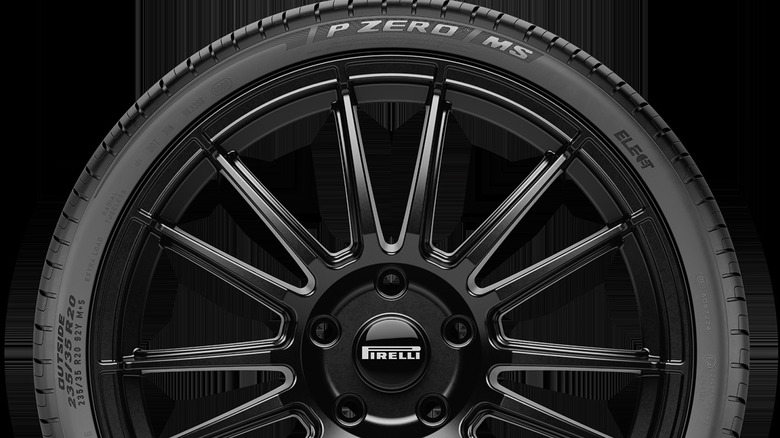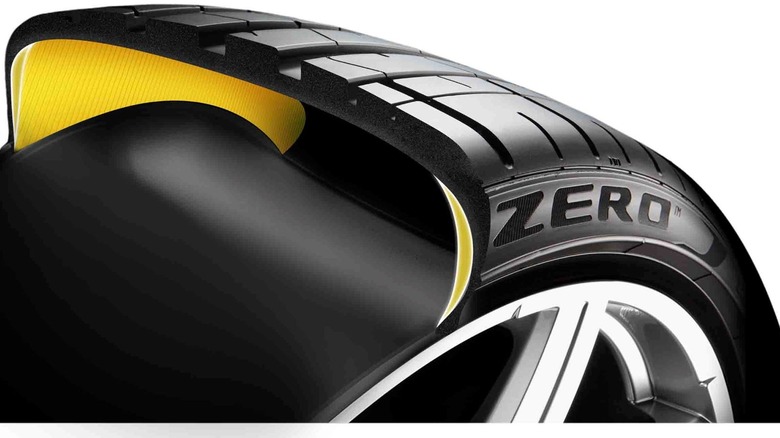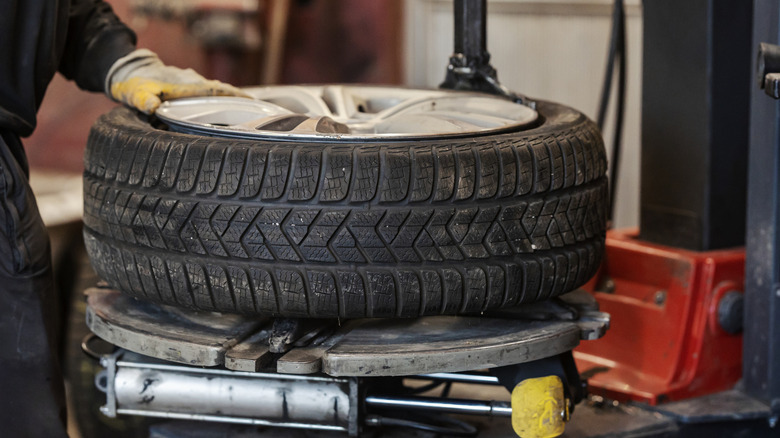Can Run Flat Tires Be Plugged? Here's What You Need To Know
Run-flat tires are an increasingly common type of tire on passenger cars. Manufacturers such as BMW are mounting them on new cars instead of equipping the car with a spare tire. Doing so saves weight and space, plus run-flat tires can be considered both safer and more convenient than standard tires. If there is a puncture and the air escapes from the tire, the tire is designed not to collapse but to carry the weight of the car on the sidewalls, so a sudden decompression should not lead to the driver losing control of the car. Modern cars have tire pressure monitors that warn the driver to slow down if the pressure drops. Because the tire is designed for running for up to 50 miles at 50 mph, typically, in the event of a puncture, the driver does not need to get out and change the tire, either.
However, the safety and convenience of run flats come at the cost of a construction that is different from normal tires. If a normal tire is punctured and the resulting hole is not too large, the tire can be repaired with a plug. Run flats, though, are a different story.
Run Flat Tire Contruction
Run flat tire construction is based primarily on the idea that short, thick sidewalls can support that tire's share of the weight of the car, at least for a while. Also, the tire's ability to operate once the air has escaped is dependent partly on where the rupture is located. A hole in the tread surface is more likely, and that is what the tire is designed to handle. A slash to the sidewall may compromise performance.
Regardless of where the tire has been penetrated, the result will be that the sidewalls of the tire are supporting the entire weight that the pumped-up tire is supposed to hold. The stress placed on the sidewalls is much greater than normal. It is not impossible for run-flat tires to be able to continue functioning, and Europe's FINABEL bulletproof tire rating calls for the tire to be able to function even after having the sidewall pierced by up to five 7.62mm bullets. However, for civilian run flats, any decision to patch the tire needs to take into account the condition of the sidewalls.
Can you plug a run flat tire and should you
It is physically possible to plug a run-flat tire if there is a puncture in the middle of the tread. A technician certified to work on run-flat tires should check the tire and determine whether it is repairable, as the inspection process is different for run flats. Factors such as whether the tire deflated completely and how far and fast it was driven on will all be considered.
Whether you should plug a run-flat tire depends partly on the manufacturer. Some tire makers, such as BFGoodrich, permit one plug or patch. Others, such as Bridgestone, mandate that the tire must have held at least 15 psi while punctured. Others still, such as Pirelli, warn that plugging a tire under any circumstances will void the warranty. As these conditions are subject to change, it makes sense to check your tire experts and the manufacturer before attempting to plug a run-flat tire.


